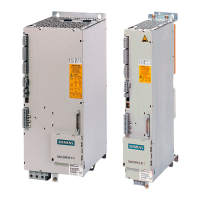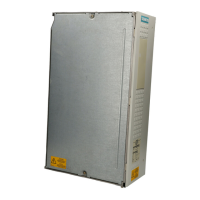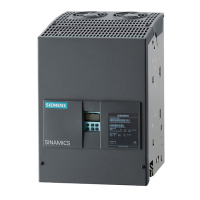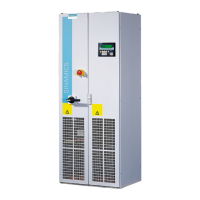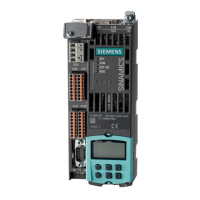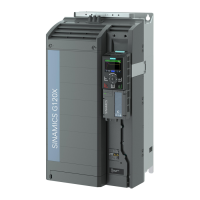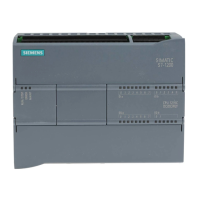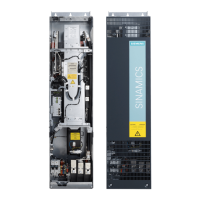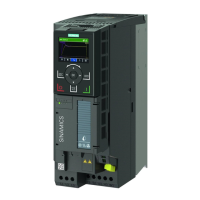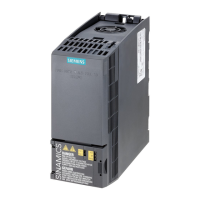9
05.01
9.7 Circuit examples =1 to =10 with SIMODRIVE 611 analog
9-267
Siemens AG 2001 All rights reserved
SIMODRIVE 611 Planning Guide (PJU) – 05.01 Edition
The control modules are described in detail in Section 5.
S Motor holding brake
The holding brake must be controlled so that it is coordinated as far as the
timing is concerned, e.g. using the PLC logic as a function of the pulse can-
cellation, controller enable and speed setpoint input. The time taken for the
holding brake to mechanically open and close must be taken into account
here. If the control has not been optimally set, this results in increased wear
and premature reduction in the braking performance.
In the circuit examples, in addition to being controlled from the PLC, the hol-
ding brake is disconnected with drop–out delay per hardware for a drive
stop. This means that a PLC fault cannot result in the brake being erro-
neously controlled when the drive is stopped. Depending on the particular
application, it must be decided when stopping in an emergency, whether the
brake is switched–off with a delay or instantaneously. Using an internal se-
quence control, 611U closed–loop controls allow a holding brake to be con-
trolled in a coordinated fashion (refer to Description of Functions SIMO-
DRIVE 611 universal).
Damping devices must be externally connected to the holding brakes to
dampen overvoltages.
For a detailed description, refer to the reference /PJM/ for SIMODRIVE mo-
tors MSD and FD.
S Safe standstill
After the drives have been stopped, these are in the safe standstill operating
condition as the energy feed to the motors has been safely disconnected.
When the start inhibit is activated, the pulses are safely cancelled in the
drive modules.
Features
S Motors cannot undesirably start.
S The energy feed to the motor is safely interrupted.
S The motor is not electrically isolated from the drive module or DC link of the
drive converter.
The machinery manufacturer must apply suitable measures to prevent un-
desirable motion after the energy feed to the motor has been disconnected.
Secondary conditions, e.g. for vertical axes
Safe standstill is only guaranteed if the kinetic energy, stored in the machine
cannot result in unpredictable movement of the drives/axes. Movement can
occur, e.g. as a result of vertical or inclined axes without weight equalization,
as a result of non–symmetrical rotating bodies or workpieces.
The motor holding brake supports the safe standstill operating condition.
Depending on the hazard analysis, additional measures may be required for
personnel and machinery protection when manually intervening in the auto-
matic mode, when traversing in the setting–up mode as well during service
and repair work.
Equipment which is used in parallel with the holding brake, can be used to
prevent axes falling or to safely clamp axes at a specific position. This red-
undant equipment can be e.g. electromechanical or pneumatic clamping
devices with cyclic monitoring.
9 Important Circuit Information
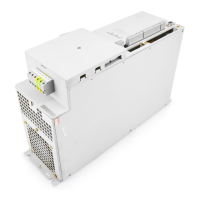
